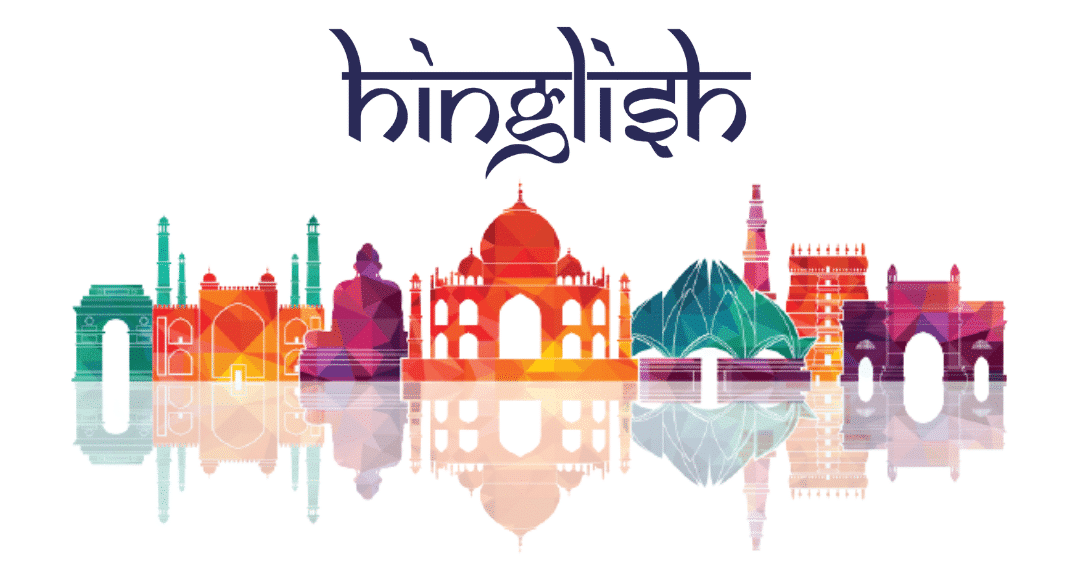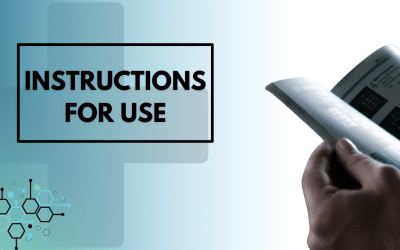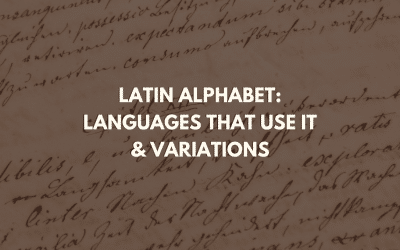So, what is Hinglish?
There are perhaps very few of us who haven’t come across Hindi text messages like “Bro chill kar” and “Arey! Yeh kya bakwaas he?!”, all typed out in English.
From Maggi’s “Taste Bhi Health Bhi”, to Bollywood’s “Gully Boy”, there’s a new language in town that’s ruling much of this country’s internet population – Hinglish.

English came to India with the East India Company and began its reign over the linguistic landscape of the country. It’s fascinating to see how Indians have moulded English to suit our cultural settings.
From the distinctly identifiable Indian English accent to the new Indian vocabulary in English, Indians have shaped and framed the language to make it their own.
Today India has the second-largest English-speaking population in the world at more than 250 million, right behind the United States. English is often a marker of social and cultural capital in the country.
While English has exerted considerable influence on Indians, what’s more, interesting is to explore how Indians have counter-influenced English and made it their own.
What is Hinglish?

In the new internet era, Indian languages have found new ways of coexisting with English. The birth of hybrid languages is one of the most significant developments in the language.
Native speakers of Indian languages today generously mix English words in their speech and write their languages in the Latin script.
The Oxford dictionary defines Hinglish as ‘a blend of Hindi and English, in particular, a variety of English used by speakers of Hindi, characterised by frequent use of Hindi vocabulary or constructions’.
It involves extensive code-switching, wherein speakers frequently switch between the two languages. The switching is however so ingrained that Hindi speakers often do not realise that they are using “foreign” words in their speech.
Often these foreign words become a part of day-to-day speech so much so that it becomes difficult to find a Hindi substitute for these words. From words like husband, wife, and cousin to train, road, and metro, English words have replaced Hindi equivalents in popular usage.
Even the most essential words like ‘Sorry’ and ‘Thank You’ are in fact foreign words that have become an indispensable part of our vocabulary.
Hinglish also involves the replacement of the traditional Devanagari script for Hindi with the Latin script. In fact, this hybridized language has become the norm thanks to the surge of internet and online communications.
Today, many of the brands in India communicate in Hinglish, whether we notice it or not. Almost all popular slogans are examples of Hinglish- from Pepsi’s ‘Yeh Dil Maange More’ to Hero Motorcorp’s ‘Hum Mein he Hero’, Hinglish has become the future of marketing.
Also Read: 10 Big Brands with Hindi Taglines

Given the increasing importance of Hinglish in India, we conducted a survey to understand whether Indians prefer Hinglish to Hindi and how various demographic factors affect their language preferences.
The objective of the survey was to develop an understanding that can aid brands in crafting a marketing and localization strategy that resonates with the Indian audience.
The survey was conducted among 744 respondents from across the country. This 3-minute survey was conducted completely online in the months of September-October 2020. The survey aimed to understand the various demographic factors that have a bearing on people’s language preferences.
Demographic Composition of Respondents
A majority of the respondents (44.2%) belonged to the 25-44 age bracket, otherwise classified as Gen Y. While 36.2% of the respondents were in Gen X (44 and older), 19.6% of the respondents were in Gen Z (15-24).

66.2% grew up in ‘big’ metro cities like Delhi and Mumbai while 11.2% came from Tier 1 cities like Jaipur and Ahmedabad. Together, these have been categorized as Metro and Tier-1 cities where an overwhelming majority of the respondents come from. 14.9% of the participants grew up in small towns and 7% in Tier 3 cities like Ajmer and Ludhiana. These have together been classified as Tier 2 and 3 cities.

A majority (58.3%) of the 744 respondents did not identify Hindi as their mother tongue, while 41.7% identified Hindi as their mother tongue.
63.3% responded that they use English more in their day-to-day life while 36.7% responded that they use Hindi more.
43.8% of respondents mix Hindi and English words in speech only sometimes. 39.5% always mix the two languages, while 16.7% said that they never mix the two.
Also read: What Are The Fastest Growing Languages?
Usage of Hinglish
When given this Hindi phrase in Devanagari script and Latin script:
13.3% of the participants could read the Devanagari script faster than Latin. 31.9% were able to read the Latin script faster while 54.8% could read both equally fast.
When shown these two paragraphs:
A whopping 57.8% said that they prefer reading Hindi text messages written in Latin script over Devanagari script. 25.1% stated that they prefer reading the Devanagari script while 17.1% stated that they don’t have a particular preference.
When shown this message:
“Aaj meri khoobasoorat beti ka teesara birthday hai. Hamne uske pasandeeda restaurant mein birthday manaaya. Ham sabhe ne cake khaaya aur gubbaare udae”
56.7% said that they receive/see long Hindi WhatsApp forwards and Facebook status messages typed like this. 18% said that they receive such messages all the time while 25.3% said that never receive such messages.
Let’s see how different demographics affected people’s Hinglish preferences:
Impact of Place of Origin on Language Preferences
1. Place of Origin and Mixing Hindi and English
Among those in Metro and Tier 1 cities, 44% mix Hindi and English in their speech sometimes, 38% mix both languages always and 18% never do it.
43% of those in Tier 2 and 3 cities mix Hindi and English sometimes, 44 % responded that they always mix the languages in speech while 13% said that they never do it.

Also read: Hindi Idioms and Phrases That Can’t Be Translated
2. Place of Origin and Faster Speed of Reading
Among those in Metro and Tier 1 cities, 35% were able to read the Latin script faster while 11% could read the Devanagari script faster. 53% on the other hand could read both scripts equally fast.
In Tier 2 &3 cities, 18% found the Latin script faster to read while 19% could read the Devanagari script faster. 63% were able to read both scripts equally fast.

3. Place of Origin and Preferred Script
60% of those in Metro and Tier 1 cities prefer Latin script while 24% prefer Devanagari script. 17% stated that they prefer both languages equally.
In Tier 2&3 cities, 52% prefer Latin script, 29% prefer Devanagari script and 19% prefer both languages equally.

4. Place of Origin and Exposure to Hinglish
Among those in Metro & Tier 1, 55% responded that they are exposed to Hinglish sometimes, 18% responded that they are exposed to it all the time. 27% stated that they have never come across Hinglish.
60% of people in Tier 2 & 3 cities are exposed sometimes to Hinglish, 19% come across Hinglish all the time while 21% are never exposed to it.
Connect With Hinglish Speaking Audience
Milestone helps you seamlessly translate content & localize your website, products, and services for more reach, better conversions, and greater sales.
Impact of Age on Language Preferences
1. Age and Mixing English and Hindi
Nearly 40% of people belonging to all three Age Brackets responded that they always mix up Hindi and English.
47% of Gen X responded that they mix both languages sometimes while 13% responded that they never mix.
Among Gen Y respondents, 44 % mix languages sometimes and 16% never do it.
37% of Gen Z respondents said that they mix up Hindi and English sometimes while 25% responded that they never mix both.

2. Age and Faster Read
Among Gen Z respondents, 49% were able to read the Latin script faster while only 6% could read Devanagari faster.46% stated that they could read both languages equally fast.
18% of Gen X respondents read Latin faster while 19% read Devanagari faster. An overwhelming majority of 63% could read both scripts equally fast.
Among Gen Y respondents, 35% found it faster to read Latin while 11% found Devanagari faster. 53% were able to read both languages equally fast.
Also Read: Hindi Idioms and Phrases That Can’t be Translated

3. Age and Preference of Script
A whopping 75% of Gen Z respondents preferred Latin script while only 8% preferred Devanagari script. 17% stated that they have equal preference for both scripts.
62% of Gen Y respondents preferred Latin script and 23% preferred Devanagari script. 15% were indifferent between the two scripts.
Among Gen X respondents, 43% preferred Latin script, 37% preferred Devanagari script and 20% had an equal preference for both languages.

4. Age and Exposure to Hinglish
Among those in Gen Z, 57% responded that they are exposed to Hinglish sometimes and 18% responded that they are exposed to it all the time. 25% stated that they have never come across Hinglish.
While 53% of Gen Y come across Hinglish sometimes, 17% see it all the time and 25% are never exposed to it.
60% of people in Gen X are exposed sometimes to Hinglish, 19% come across Hinglish all the time while 21% are never exposed to it.

Impact of Mother Tongue on Language Preferences
1. Mother Tongue and Mixing Hindi and English
52% of people who identify Hindi as their mother tongue always mix up English and Hindi in speech. 42% responded that they do so only sometimes while 6% said that they never do it.
31% of respondents whose native language is not Hindi said that they mix up both languages. 45% of non-native speakers of Hindi said that they mix the languages sometimes while 25% said that they never mix up Hindi and English.

2. Mother Tongue and Speed of Reading
Among Hindi respondents, 25% were able to read the Latin script faster while only 17% could read Devanagari faster. 58% stated that they could read both scripts equally fast.
37% of respondents with other languages as their mother tongue read Latin faster while 10% read Devanagari faster. An overwhelming majority of 53% could read both scripts equally fast.

Connect With Your Customers In Their Native Languages.
Milestone helps you seamlessly translate content & localize your website, products, and services for more reach, better conversions, and greater sales.
3. Mother Tongue and Preferred Script
48% of those with Hindi as their native language prefer Hindi written in Latin script while 30% prefer traditional Devanagari script. 22% stated that they prefer both scripts equally.
65% of those with other mother tongues prefer Latin script, 21% prefer Devanagari script and 14% prefer both scripts equally.
One of our respondents, Yagna commented “I am fluent in reading Devanagari on paper. But I am not comfortable reading the scrip on any electronic devices…that is a key factor for me to just ignore anything written in Devanagari!”

Also read: Languages Spoken In Mumbai
4. Mother Tongue and Exposure to Hinglish
Among those with Hindi as their native language 58% responded that they are exposed to Hinglish sometimes, 20% responded that they are exposed to it all the time. 22% stated that they have never come across Hinglish.
55% of people who have mother tongues other than Hindi are exposed sometimes to Hinglish, 18% come across Hinglish all the time while 28% are never exposed to it.

Impact of Frequent Usage
1. Frequent Usage and the likelihood of mixing English and Hindi
Among those who use English more frequently, 48% mix up Hindi and English sometimes. While 28% always mix the two languages, 24% never mix the two.
Among those who use Hindi more frequently, an overwhelming 59% responded that they always mix Hindi and English. 37% mix both languages sometimes while only 4% stated that they never mix the two languages.

2. Frequent Usage and Faster Read
51% of people who use more English were able to read both Latin and Devanagari scripts equally fast. While 40% could read the Latin script faster, only 9% could read the Devanagari script faster.
An overwhelming 62% of those who use Hindi more frequently were able to read both scripts equally fast. 17% were able to read the Latin script faster while 20% could read the Devanagari script faster.
A participant, Vandana commented, “Since all the written communication is done in English…my Hindi writing skill has gone down over the years”

3. Frequent usage and preferred script
67% of those who used English more frequently preferred the Latin script, 18 % preferred the Hindi script while 15% recorded equal preference.
Among those who use Hindi more frequently, 37% preferred the Devanagari script while 42% preferred the Latin script. 20% preferred both scripts equally.

Also Read: Do These 10 English Words Have a Hindi Translation?
4. Frequent Usage and Exposure to Hinglish
56% of people who use English more frequently stated that they are exposed to Hinglish sometimes, 16% are exposed always and 28% never come across Hinglish.
Among those who use Hindi more frequently, 57% come across Hinglish sometimes, 22% all the time, and 21% are never exposed to Hinglish.

Limitation
Since the survey was conducted completely online, only people with smartphones and internet connectivity took part in it. Further, the language of the survey was English. Thus the respondents are representative only of the urban/semi-urban English-speaking population with internet access.
Summary of Findings
- Close to 83% of people mix English and Hindi words in their speech
- The percentage of people who can read Devanagari script faster than Latin is only 13%.
- Nearly 58% of the respondents prefer reading Hindi written in Latin script over the Devanagari script.
- Close to 75% of the population receives WhatsApp messages/statuses written in Hinglish
- The city, where respondents grew up, does not have a bearing on the mixing of Hindi and English words in speech
- The place where respondents grew up has no significant bearing on exposure to Hinglish
- Across the three age brackets, the percentage of people who mixed Hindi and English in speech always remained constant at nearly 40%.
- An overwhelming majority of 75% of people in Gen Z preferred Latin script in contrast to 43% in Gen X, while only 8% of Gen Z respondents preferred it. Hinglish is thus more in use among the young.
- There is no significant correlation between age and exposure to Hinglish
- More than half of native Hindi speakers always mix up Hindi and English in their speech.
- Non-native speakers of Hindi preferred the Latin script (65%) more than native Hindi speakers (48%).
- An overwhelming majority of 67% of those who use English more frequently prefer the Latin script. Interestingly, a majority of those who use Hindi more also prefer the Latin script (42%) over the Devanagari script.
To Conclude
As one respondent, Ankita Srivastava said, ‘To be honest – English gives us the class and Hindi, the feels.’
Across age groups, the urban and semi-urban online Indians prefer the Latin script over the traditional Devanagari script. Brands looking to connect with today’s internet users and get their message across effectively, need to localize instead of just translating their content.
We can help you adapt your content to Hinglish, Kanglish, Tamlish and more.
For more information or permission to republish, contact us at [email protected]
Also read: Top 10 Translation Companies in India
Connect With Hinglish Speaking Audience
Milestone helps you seamlessly translate content & localize your website, products, and services for more reach, better conversions, and greater sales.
Get in touch with us for a special discount.




